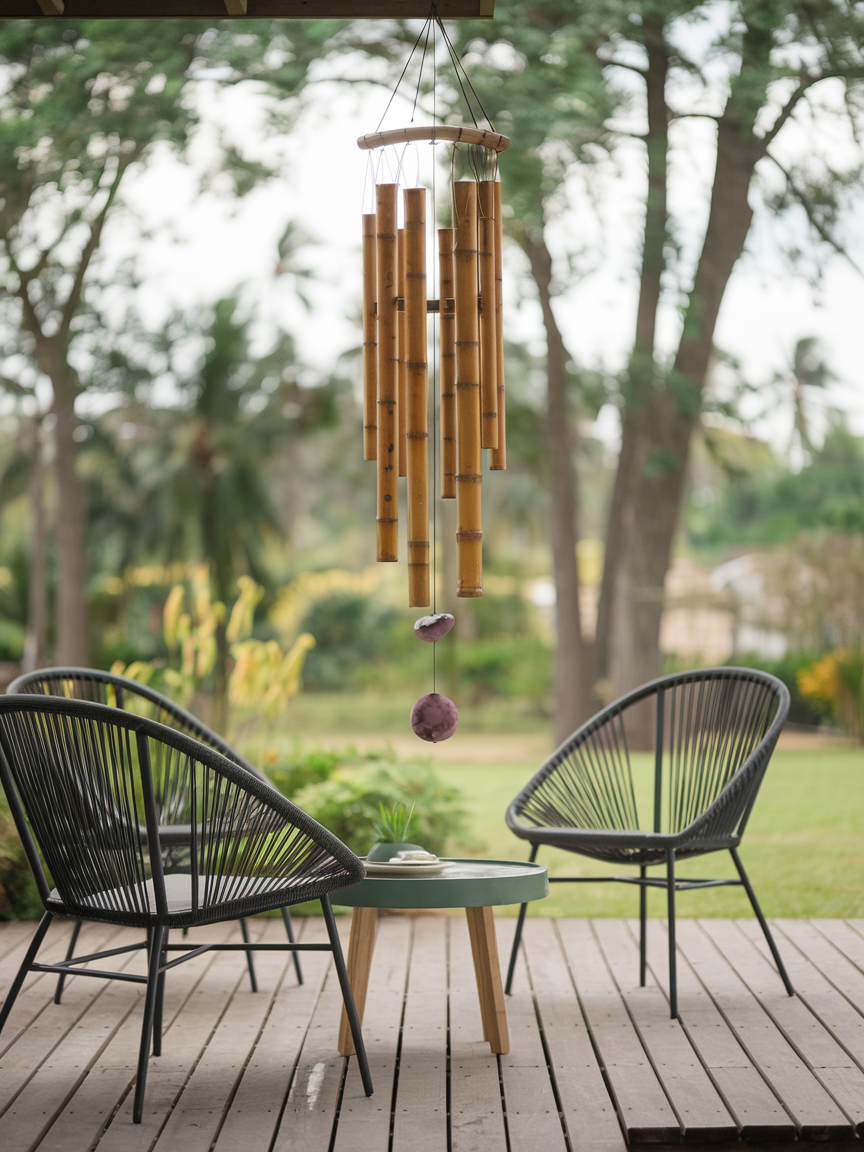A single note can relax tense shoulders, slow a racing pulse, and summon a memory that brings a smile. That’s the power behind a well‑tuned memorial wind chime—and why selecting the right pitch matters as much as engraving the perfect words.
In this guide we’ll translate frequency jargon into plain English, show how different notes affect mood, and walk you through picking the tone that best supports healing after loss.
1. The Science of Frequency, Simplified
-
Frequency (Hz): Number of sound waves per second. A lower number = deeper note.
-
Resonance: How strongly a material vibrates at a given frequency. Aluminum chimes resonate longer than steel of the same size.
-
Parasympathetic response: Mid‑range tones (≈ 220–440 Hz) activate the body’s “rest and digest” system, easing stress.
Takeaway: Aim for calm‑inducing frequencies unless the recipient prefers a bright, energizing ring.
2. Common Chime Notes & Emotional Effects
| Fundamental Note | Approx. Frequency (Hz)* | Emotional Signature | Ideal For |
|---|---|---|---|
| C (Deep) | 256 or 128 | Grounding, steady | Reflective gardens, graveside memorials |
| D (Warm) | 288 | Comforting, hopeful | Porch seating areas, morning rituals |
| E (Bright) | 320 | Uplifting, sunny | Front entryways, celebratory anniversaries |
| F (Heart) | 341 | Heart‑centered calm | Pet memorial corners, meditation spots |
| G (Balanced) | 384 | Centered, harmonious | General‑purpose gifts, shared family spaces |
*Exact fundamentals vary by tuning system; table uses concert pitch A = 432 Hz.
3. How to Hear the Difference
-
Tap‑test video: Use your phone to record a gentle striker tap on each chime; compare playback tones.
-
Frequency apps: Free apps like Cleartune or Pano Tuner display pitch in Hz.
-
Body check‑in: While the note sustains, notice your breathing, heart rate, or any emotional shift.
Pro tip: Low‑frequency notes linger longer, which some find soothing but others feel is “too melancholy.”
4. Matching Tone to Grief Stages & Personality
| Recipient Feel | Recommended Note | Why It Helps |
| Shock / Overwhelm | C or D | Deep resonance feels like an anchor in chaotic emotions |
| Nostalgic / Reflective | F | Heart chakra frequency supports emotional processing |
| Ready to Celebrate Life | E or G | Brighter tones symbolise uplifting memories |
| Easily Startled | Soft‑struck C | Lower volume + lower pitch = gentle presence |
5. Environment Changes Everything
-
Hard walls & stone patios amplify higher notes; choose C/D to avoid sharp echoes.
-
Open gardens let sound dissipate—pick E/G so the melody carries.
-
High‑wind zones (coastal, hilltops) benefit from heavier tubes (≥ 1¼″ diameter) to prevent constant clanging.
(Need placement tips? See our guide on Where to Hang a Memorial Chime Indoors vs Outdoors.)
6. Step‑by‑Step Tone Selection
-
List the loved one’s traits—calm, upbeat, adventurous.
-
Choose corresponding note from Section 4.
-
Factor in location acoustics (Section 5).
-
Listen to sample recordings—our product pages include 10‑second clips for every note.
-
Confirm personalization details—engraving or printed sail design.
Shortcut: Use the “Tone Choice” dropdown on any chime in our shop; a pop‑up plays each note so you can decide in under 30 seconds.
7. FAQs
Q: Are low frequencies always more calming?
A: Generally yes, but extremely low notes (< 200 Hz) can feel somber to some listeners. Mid‑range C/D strikes the best balance.
Q: Do thicker tubes sound lower?
A: Diameter affects sustain and volume more than pitch; length is the bigger driver of note.
Q: Can I mix two tones in one memorial area?
A: Absolutely—many families pair a deep C chime with a higher G to create gentle harmony.
Closing Resonance
Selecting a tone is part science, part heart. When the right note finds the right ear, it turns every breeze into a mini meditation—and a loving hello from someone missed.
Next step: Head back to the Ultimate Guide to Personalized Memorial Wind Chimes or shop our full collection with built‑in tone samples.

